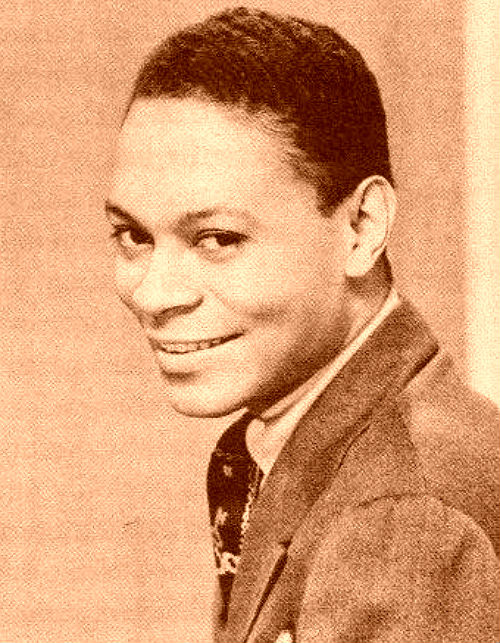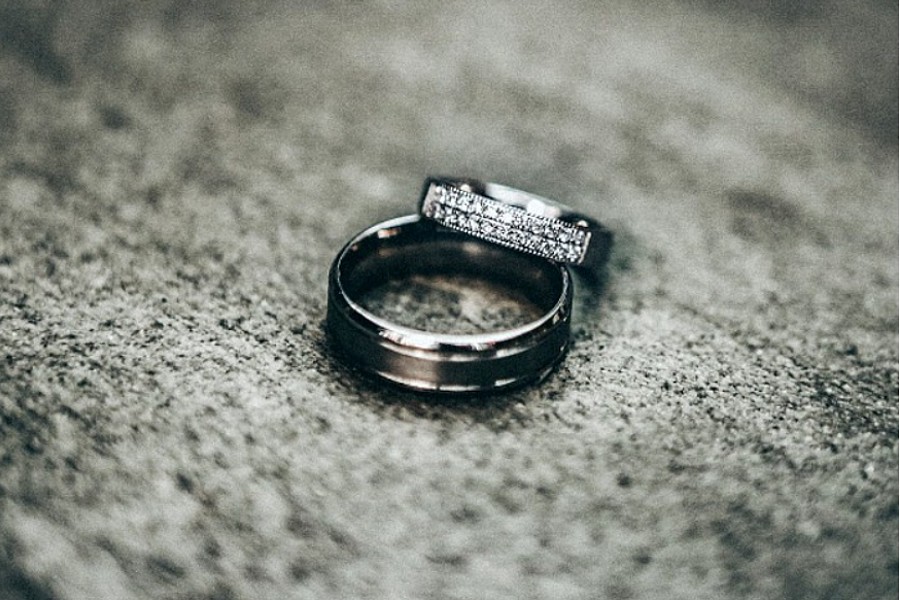
Jimmie Daniels was born in Laredo, Texas in 1908, but was raised in Little Rock, Arkansas. He left Arkansas and traveled to New York in the 1920s, at the height of the Harlem Renaissance. He matriculated at Bird’s Business College in the Bronx where he studied business. He returned to Arkansas after completing school to become an administrative assistant for A.E. Bush, the president of Century Life Insurance Company. The monotony of office work and his wish to pursue a career as an entertainer caused him to leave his position. He traveled back to New York where he secured his first professional singing job at the Hot Cha nightclub in Harlem, where he lived with Wallace Thurman as borders at 1890 Seventh Avenue on the north-west corner of 115th Street, in a cooperative unit owned by Edna and Lloyd Thomas. He soon expanded his performing repertoire to include audiences in Europe. He spent 1933 and 1934 performing at the Summer Sporting Club in Monte Carlo, Monaco and at Ciro’s restaurant in London.

During this time before Kenneth Macpherson, there was the famed architect, Phillip Johnson. They met around 1934 when Jimmie was first starting to get some real recognition as an entertainer. Daniels personified everything Johnson looked for during his late night excursions to Harlem – brown-skinned exoticism and good times! Johnson had everything Daniels seemed to desire for himself – money and status, plus he was adventuresome, too.
At first glance, it would seem that they would have been made for each other but that was not the case. There were no cute apartments in Greenwich Village, and the young singer only saw Johnson at the slightly older man’s convenience. Six decades later, Johnson looked back with an odd mix of fond recall and regret. Referring to Daniels as “the first Mrs. Johnson” he said “I was the envy of all downtown. It was so chic – it was what one did if one was really up to date. Those were the days when you just automatically went to Harlem.”
I’ll Keep You Posted wrote that Mr. Daniels was lithe, delicate, and had an engaging, infectious smile that he would soon learn to use to his advantage. Singer Alberta Hunter, a lifelong Harlem friend, remembered the time well. “This one was just a little one” she said. “Handsome? Oh, was he handsome! He had hair as red as fire, and his folks had money.” Dare anyone have said that they thought the young, refined singer with the impeccable style, grace and proper enunciation was just a little snobbish and affectations, too?
It wouldn’t have mattered! It certainly would not have stopped the young, attractive Daniels from enjoying the ride of his youth, and becoming one of the most popular cafe singers and masters of ceremonies of the Harlem Renaissance. In demand from New York to Paris, these accomplishments were but stepping-stones toward bigger and better things.
After singing throughout Europe in the 1930s, he returned to New York where he became the proprietor of his own club in 1939.
 It was called the Jimmie Daniels’ Nightclub at 114 West 116th Street at Lenox Avenue and he operated the business until 1942 when he entered the military.
It was called the Jimmie Daniels’ Nightclub at 114 West 116th Street at Lenox Avenue and he operated the business until 1942 when he entered the military.
He could not always go downtown and be black and fabulous but he did learn how to bring downtown uptown and cash in during the process. Jimmie’s clubs catered to the downtown trade out for a night of slumming while searching for the exotique in Harlem. Everybody got what they wanted!
According to some reports, Jimmie started out at Lenox Avenue’s Bronze Studio Catering Hall, but he owned and operated the Jimmie Daniel Supper Club in Harlem on Lenox Avenue at 116th Street in the Bernheimer Building which he left to go into the army, from 1939 to 1942. Condescendingly, The New Yorker described it as a model of dignity and respectability …. by Harlem standards! He moved to 114 E. 125th Street in 1941.

During the period that Daniels ran his nightclub, he became a muse for renowned African American artist Richmond Barthe´. In 1938, Kenneth MacPherson commissioned Barthe to create a marble bust of Daniels’ head. A photograph of Daniels standing next to the sculpture was taken by Carl Van Vechten, a prominent artistic photographer, and can be found within the collection. While the Barthe´ work featuring Daniels was not donated with his collection, two other pieces of artwork created by Barthe´ were. The sculptures Shoeshine Boy and Portrait of Kenneth MacPherson were added to the Center’s extensive art collection, with Shoeshine Boy being introduced in the Center’s Beyond the Blues art exhibition in 2010 at the New Orleans Museum of Art. Photographs of these two artworks can also be found within the Daniels collection. Daniels’ involvement with the talented Barthe´ and the wealthy MacPherson was indicative of the relationships he formed with elite New Yorkers and these associations would serve him well in his next position.
Daniels became the host at the Bon Soir club in 1950, and it was in this role where he gained notoriety among New York’s exclusive circle of entertainers and high society members. Daniels was a popular and well-known figure at the club for ten years. The Bon Soir was known as a place where African Americans and Whites, homosexual or heterosexual, interacted without tension. A number of rising stars appeared at the club including Barbara Streisand whose first engagement was at Bon Soir. Unfortunately, the photographs remain the primary documentation of Daniels’ life while he worked at the club. There wasn’t any correspondence or other documents donated that could have offered more insight into, what appears to be, Daniels’ very fascinating life.

Grant Sprandling, the man who helped facilitate the donation of the collection by Madsen to the Center, and a visitor of Bon Soir during the 1950s, gave his recollection of the club’s atmosphere in an oral history. He stated: “If you didn’t know where you were going, you would miss the entrance to the small supper club down a steep staircase below street level protected by an unobtrusive black awning. The bar to the right as you entered was awash with handsome gentleman in grey flannel suites, the rage in the 50s…brilliantly handsome. Jimmie case a spell that made those of us who had just arrived at the club feel we were, for a while part of the famous and glamorous. The ambiance of the Bon Soir was a balance between elegant and intimate, risqué and respectable.”
Sprandling was clearly mesmerized by Daniels’ performance like many others who would visit the Bon Soir. Unfortunately, the club’s management did not understand how his very presence made Bon Soir a popular nightlife destination. Daniels was fired after ten years and the club lost substantial business as a result. The proprietors of Bon Soir begged him to return but he steadfastly refused their offers. Daniels continued to perform around New York at clubs, parties, and festivals until his death.
In the early 80’s, Jimmie often lived with his oldest, dearest friend, the legendary Alberta Hunter and took care of her in her waning years. He was still rather well set up and secure by the time he proceeded her in death at the age of 76, on July 1, 1984 in St. Clare’s Hospital after suffering a stroke.
Via source
Photo credit: 1) Photo of Jimmie Daniels. 2) Kenneth Macpherson and Jimmie Daniels. 3) Photo of the Jimmie Daniels Supper Club. 4) Photograph of Small’s Paradise in Harlem. From left to right are pianist Garland Wilson, Jimmie Daniels, pianist Dorothy Donegan, Rex Madsen, and Kelsey Pharr of the Delta Ribbon Boys and husband of Mabel Mercer. 5) Jimmie Daniels. Art.
Become a Harlem Insider!
By submitting this form, you are consenting to receive marketing emails from: . You can revoke your consent to receive emails at any time by using the SafeUnsubscribe® link, found at the bottom of every email. Emails are serviced by Constant Contact








